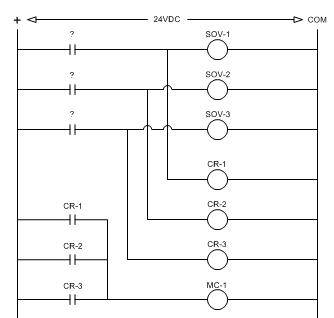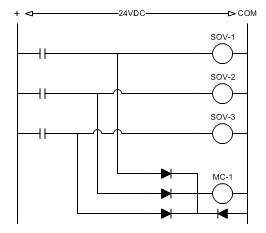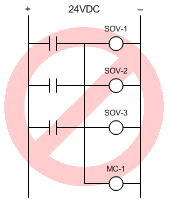I have a situation on a machine that requires some special control wiring. On the machine itself, they added a blower motor that needs to run only when certain low voltage 24 vdc valves are energized. There is a control box that has all the control blocks and wiring, and that is where I will be installing my D-line contactor/starter. Here is where I need a little help. I will bring my 480 volt 3 wire feed in to the control box, wired to a 3 pole contactor and then to the moter. I have 3 separate 24 vdc valves that when they are energized (they all run at separate times, never together) the blower motor has run at that same time. The contactor has A1 wich is my positive, A2 wich is the negative, and a NC and a NO.
I'm thinking there must be an auxiliary contact to add to make this work, because of the 3 control wires. Any Suggestions?
Thanks
Brandon
I'm thinking there must be an auxiliary contact to add to make this work, because of the 3 control wires. Any Suggestions?
Thanks
Brandon




